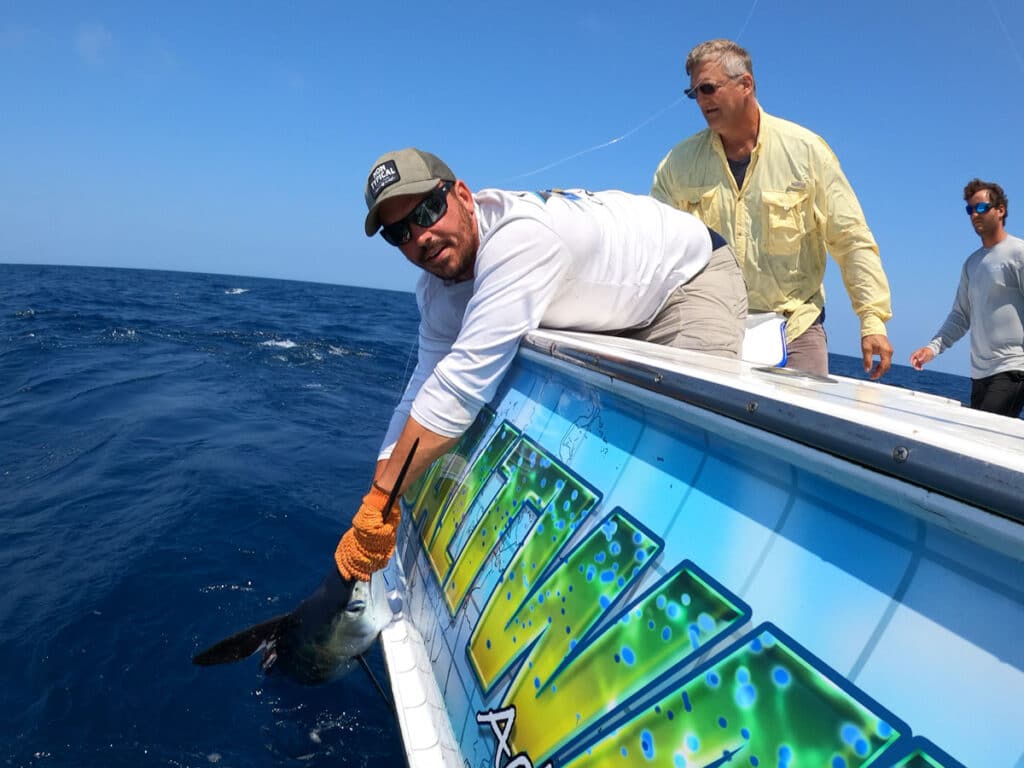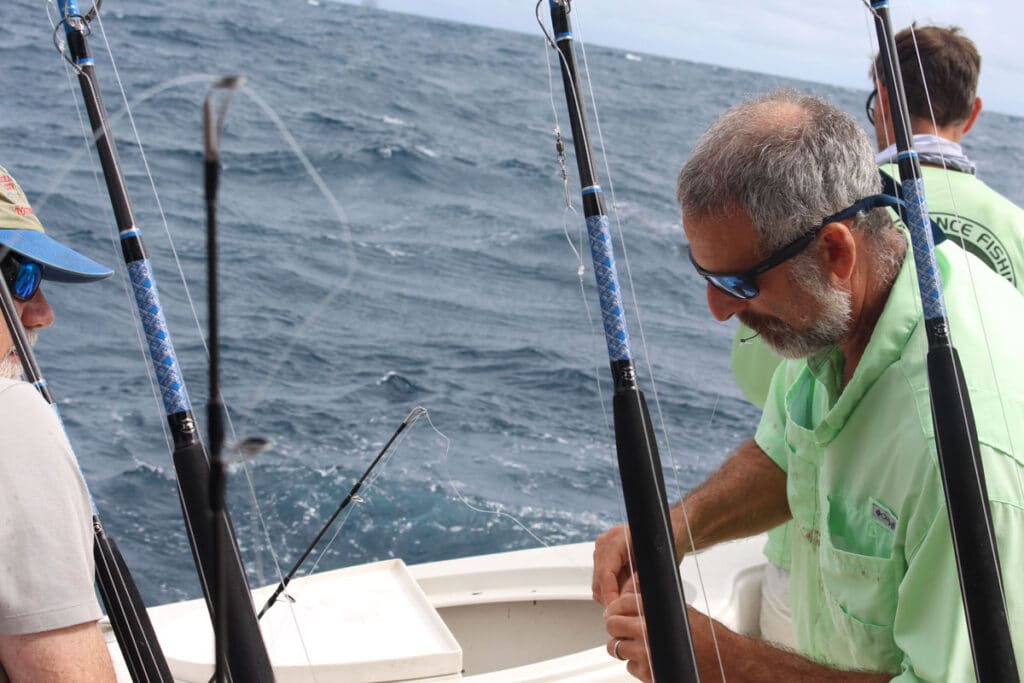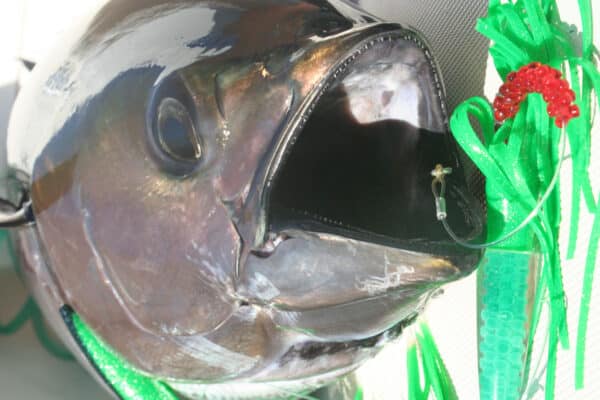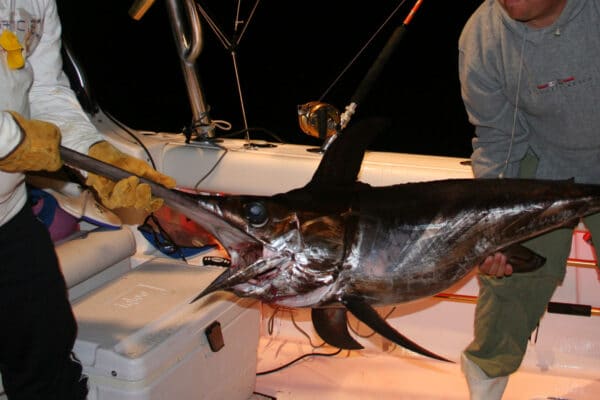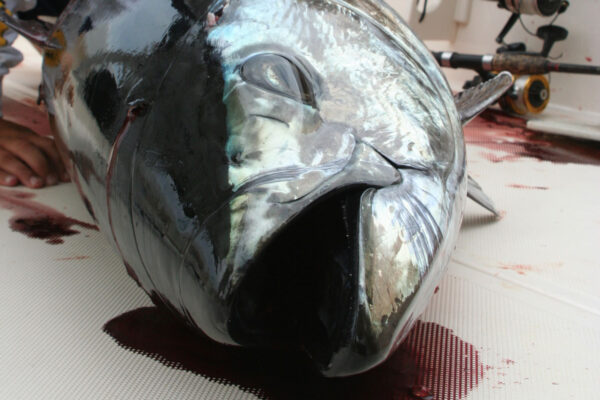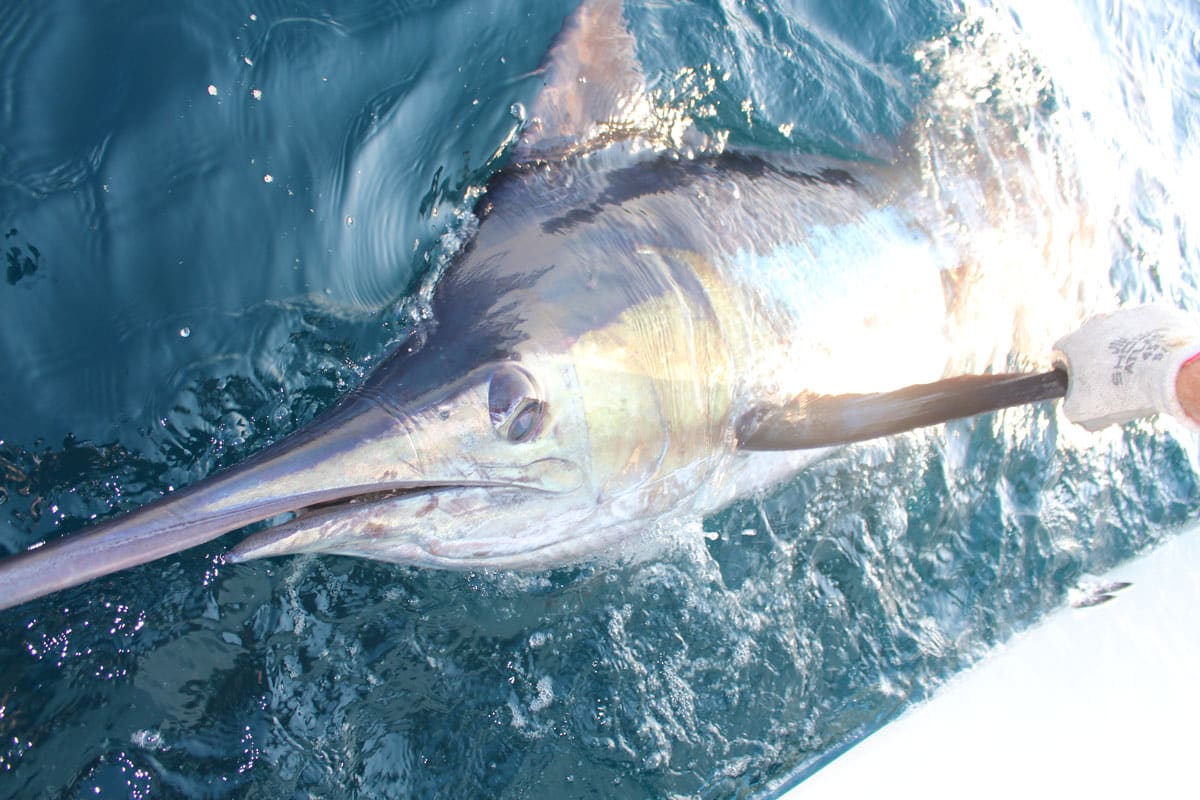
Why do all those marlin seem to be window shopping?
Few things are as frustrating—excruciating, even—as marlin that appear in the spread but refuse to eat. Whites are particularly guilty, sometimes going from one offering to the next and checking out every bait in a spread before turning tail and disappearing without ever making an attack. And even when you’re pulling a tuna spread or trying to fill the box with mahi-mahi, it hurts when that billfish swims away without a bite. We assuage our disappointment by telling ourselves that they were just window-shoppers, not aggressive fish looking for a meal.
Reality check: when big fish swim up behind a little fish, they’re aggressive. And if a marlin looks at one bait after the next then swims off without eating something, somebody screwed up.
Calm in the Cockpit
When a bill appears in the spread the first mission is for the crew to keep its cool. Yes, whoever spots the fish needs to let everyone know it’s there, but yelling and shouting loudly won’t go unnoticed by the fish.
Human voices are audible underwater, and most of us would be shocked to learn just how much of the noise we make aboard a boat creates sounds well aft of it. That’s what we discovered by towing a hydrophone in the spread and recording the noises we heard—the most common of which (setting aside the constant drone of propeller noise) was people talking loudly or yelling to be heard above the boat’s engines. What was even worse were sharp noises, like slamming a salon door, dropping a fiberglass cockpit hatch, or skipping the last few steps of a flybridge ladder and jumping down to the deck. Sounds like these sound like a gun going off underwater. All are also unnatural in the marlin’s world, and we have to assume that they can raise alarm when heard by the fish.
Triggering an Attack
Okay: the fish is back there, you all know it, but you’ve kept things calm and quiet. What’s next? Let the fish tell you. If it’s trailing a bait of a reasonable size (not a big spreader bar or a horse ‘hoo you have out for monster blues) and just looking at it, your next move should be to pull that bait away from the fish. Many anglers automatically try a drop-back, but this is exactly the wrong thing to do. The marlin hasn’t crippled its prey yet, so why would that baitfish go limp and stop swimming? Instead, make the predator think its potential dinner is trying to escape. Take six or seven hard cranks on the reel, and the fish will often hit the turbochargers and start swinging.
If, on the other hand, the fish is whacking that hapless bait but not eating it, or if it’s on an unreasonably large bait or lure, go for the drop-back with a smaller bait running in front of the target of interest (it’s always good to have something small on a flat-line for this purpose) or send it a pitch-bait. Yes, we know you were tuna fishing, but you still prepped up a naked dink just in case… didn’t you?
Let line spill out as fast as possible without causing backlash, and try to feel for the take. When you’re sure the fish has the bait lock up and crank. If the fish doesn’t eat after four or five seconds, lock up and crank it back as fast as you can. If the fish pursues and swipes, drop again. But if it shows little or no interest crank the bait all the way back to the boat. Instead of offering the reject again and again, swap it up.
Grab for a line in the spread with a different color skirt or one that’s a different size. Pop it out of the clip it’s in if necessary and move the rod tip to direct it closer to the fish, and when you’re sure it’s within its eyesight go right back to pulling and dropping, mimicking an escape when the predator is following and a stun event when it’s swiping with its bill.
Tip: making all of this happens requires teamwork, and if you fish with different people in the crew on a regular basis it helps to mark your rods so you can quickly tell inexperienced crewmembers which is which. A regular, experienced crew can keep track, but if you tell a newbie to crank a specific bait, the fish is likely to be long gone by the time your buddy figures out which rod is which. Telling them to “grab the rod marked LR” works much better than telling them to grab the rod “with the line in the long rigger.”
Audible Alarms
Remember the whole time that this all should take place without yelling, screaming, and stomping, or you risk making that fish think twice. Marlin may not be as sketchy and spooky as largemouth bass in a placid lake, but they’re wild creatures living in a vicious world. They’re always on the alert, and if you turn that alert into alarm you can bet they’ll become a window-shopper.
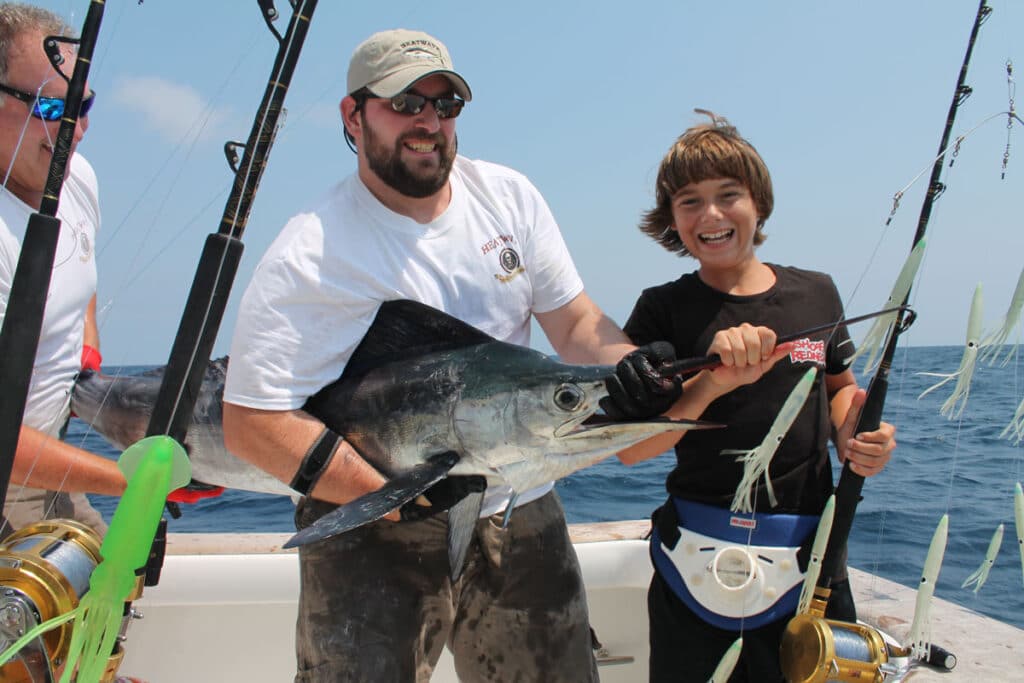
Sure, you might have left the dock with your sights set on different target. No, you probably aren’t going to take that billfish home for dinner. But it’s downright insulting when one of those pelagic predators rejects your every offering and swims off without a care. Window shopping, indeed.

